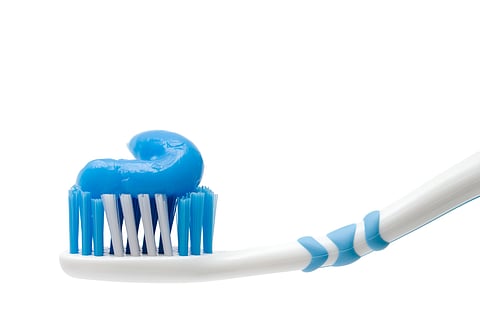

ISTOCK
Have you ever stood in front of your bathroom mirror, brushing your teeth, and wondered: who came up with this minty, foamy goop we use every single day? Why does it taste like mint? And did people always brush their teeth with toothpaste? Like most everyday items, toothpaste has a surprisingly strange and fascinating history.
Long before toothbrushes and sparkly white smiles became the norm, people still cared about clean teeth—but their methods were, well, not quite what you’d expect. Over 5,000 years ago, ancient Egyptians created the world’s first known tooth-cleaning mixture. But it wasn’t minty or creamy. Their version was made from crushed rock salt, burnt eggshells, and even powdered ox hooves. Sounds more like a potion from a wizard’s cupboard, right? Still, it worked well enough to scrub away grime.
Meanwhile, in ancient China and India, herbal pastes made from ginseng, salt, and dried flowers were used to clean teeth and freshen breath. The Greeks and Romans had their own methods too—Romans even added crushed oyster shells and charcoal to their tooth powder. Some people used urine. Yes, actual urine. It was believed to be a strong cleanser due to its ammonia content. Thankfully, that idea didn’t last long.
For centuries, people relied on powders, not pastes. The idea of a soft, squeezable toothpaste didn’t appear until the 1800s. In the 1850s, a dentist in America named Dr Washington Sheffield invented a creamy dental paste and sold it in jars. It was called “Dr Sheffield’s Crème Dentifrice.” But it still wasn’t very popular—mostly because no one wanted to dip their brush into the same jar every day.
Then came the toothpaste tube. In 1892, Dr Sheffield’s son had an idea. Inspired by artists who squeezed paint from tubes, he suggested putting toothpaste in collapsible metal tubes. Suddenly, brushing teeth became much easier—and more hygienic. That’s when toothpaste really took off.
But when did toothpaste get its minty taste? That happened in the 20th century. As companies began mass-producing toothpaste, they realised people liked products that left them feeling fresh and clean. Minty flavours became a marketing favourite. They didn’t actually clean your teeth better—but they felt cleaner, and that was enough. Even today, most toothpastes are flavoured with peppermint or spearmint, just because people expect that tingly sensation.
Toothpaste also became more scientific over time. In the early 1900s, scientists discovered that adding fluoride helped prevent cavities. That was a game-changer. Today, nearly all toothpastes contain fluoride, along with ingredients that strengthen enamel, fight plaque, reduce sensitivity, or even whiten your teeth. And yes, there are still unusual options—like charcoal toothpaste, fruit-flavoured pastes for kids, and even edible toothpastes for astronauts in space!
What started as crushed bones and salt has turned into a multibillion-dollar industry.
Romans used urine to whiten teeth
It sounds gross, but Romans believed that the ammonia in urine could clean and bleach teeth.
Mint is not a cleaner — it’s a trickster
The fresh feeling you get from minty toothpaste doesn’t actually mean your teeth are cleaner. It’s just a flavour that makes your mouth feel clean.